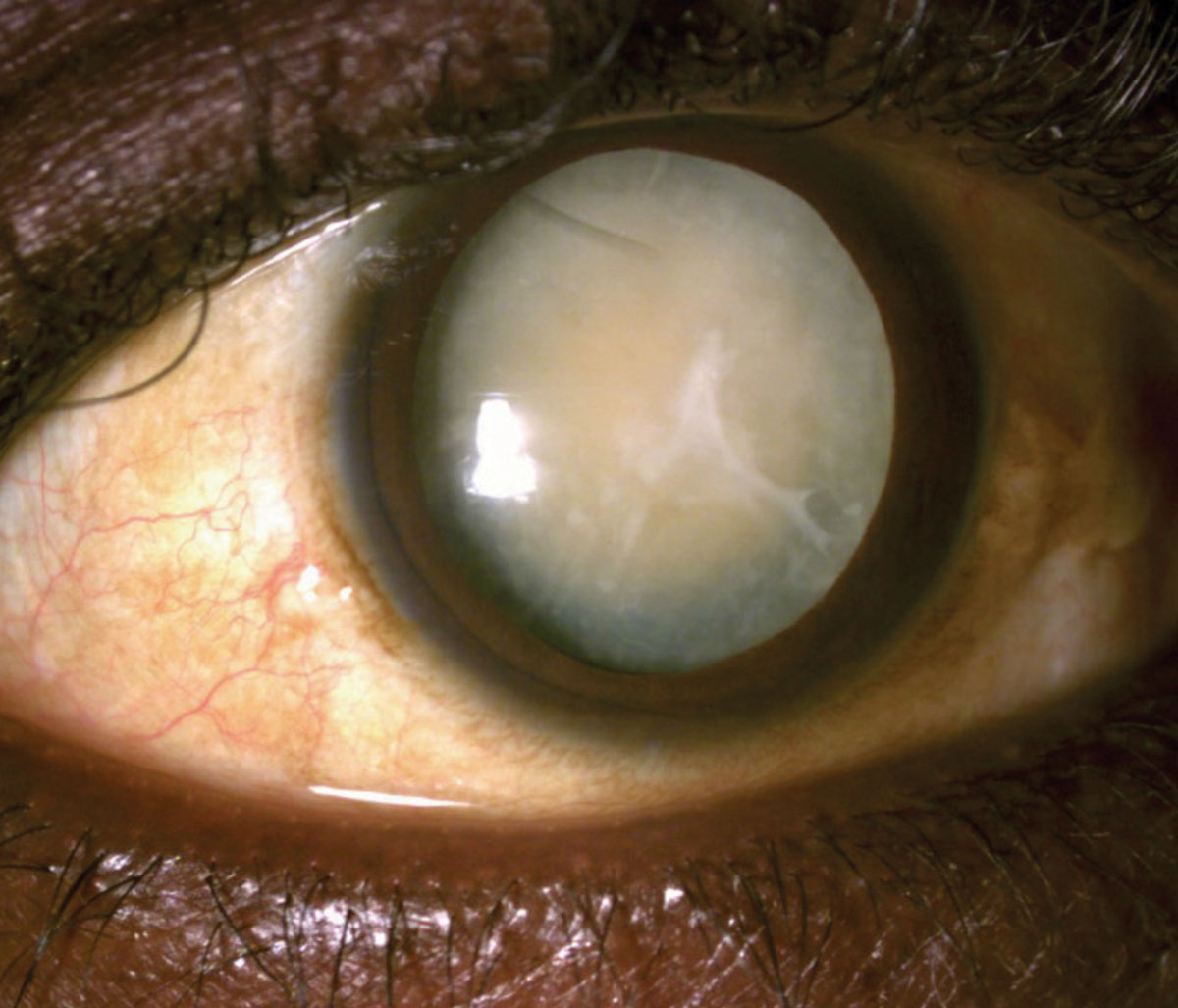 |
|
Various systemic drugs were linked to cataract development in this study. Photo: Joseph Sowka, OD. Click image to enlarge. |
Speeding up the development of cataracts is just one well-known ocular complication of a number of systemic drugs, and a new study published in AJO aimed to identify the biggest culprits. The retrospective, cross-sectional design included people of 40 years and older and data from the 1999-2008 National Health and Nutrition Examination Survey was collected for analysis.
Out of the total 14,931 participants included in the analysis, 9.6% displayed a prevalence of surgically treated cataract (2010 people). The researchers identified 20 different drug categories with significant association to surgically treated cataract, with eight of those 20 remaining significantly associated after adjustment for comorbidity instance.
Highest in association were the drug categories of tricyclic antidepressants, insulin and group III antiarrhythmic agents. The other categories included SSRI antidepressants, calcium channel blocking agents and loop diuretics. Providing some protection against risk of surgical cataract intervention was the use of sex hormone combinations in women. For all eight of the drug categories, dose-response relationships were present.
The authors of the study highlight that “our comprehensive evaluation provides new knowledge on the complex relationships between systemic medications and surgically treated cataract,” and elaborate by providing potential explanations for the observed associations.
As for antidepressants, while previous research shows mixed results in their effect on developing cataract, other mechanisms might be at play in conferring increased cataract risk in those taking this type of drug. That includes indirect effects of high intraocular pressure or glaucoma related to antidepressants, photosensitivity caused by them or the cataractogenic potential of serotonin.
With antidiabetic medications, mainly insulin, one suggested mechanism may be an increased photosensitivity of the lens as a result, thus leading to accelerated formation of cataract. Additionally, insulin use may cause proteins to unfold in response and subsequently epithelial cell death.
Related to diabetes, hyperglycemia is proposed to have a pathogenic role in formation and progression of cataract through the aldose reductase pathway causing hyperosmotic conditions, increased oxidative stress and inflammation and advanced lens protein glycation.
The protective effect seen in sex hormone combinations against needing surgery for cataract has its own potential explanations. One is that estrogen receptors directly interact with lens epithelial cells. Other possible options include antioxidant properties shown in sex hormones preventing formation and worsening, countering damaging effects induced by transforming growth factor ß or simply maintaining the cell membrane’s normal functioning.
Following these documented associations of systemic drugs, the authors of the study believe that their findings “could provide valuable insights into the biological mechanisms underlying the formation and progression of cataract and facilitate the future development of more effective prevention and treatment methods for cataract.”
Deng R, Zhu Z, Han X, et al. Evaluation of systemic medications associated with surgically treated cataract among US adults. Am J Ophthalmol. 2023. [Epub ahead of print]. |

